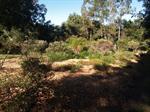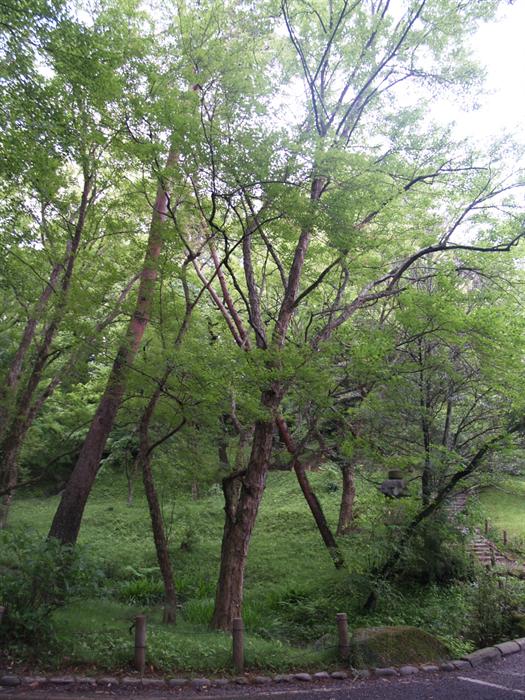Plant Ecology Study at Home Course.
Understand the nature and principles of plant ecology and apply that understanding to the cultivation of plants.
Study plant communities, plants and their environment, soils and climate, plant adaptations to extreme environments, conservation, environmental funding and assessment with this distance learning course.
Understand the nature and principles of plant ecology and apply that understanding to the cultivation of plants.
- Take it as a stand alone course to expand and deepen your perspective on how the world around you works.
- Take it as a module within a certificate or diploma in horticulture, environmental management or science
- Take it as a component of a Diploma in Horticulture (This module is accredited as part of that diploma in the UK).

Learn about Plant Communities
There are two main types of plant communities. Open plant communities consist of open canopies with sparse vegetation and usually one or two canopy layers. Closed communities include more dense vegetation with a closed canopy. Closed communities may consist of rain forest plants and include larger leafed species.
In contrast with closed communities, open communities develop where there is shortage of resources, like African savannas, North American prairies and Asian steppes, all suffering from shortage of moisture for at least several months a year, or open forests on rocky grounds lacking enough soil to grow on.
Course Structure
This module consists of 8 lessons :
- Introductory Ecology
- Plant Communities
- Plants and their Environment
- Plants, Soils & Climate
- Plant Adaptations to Extreme Environments
- Manipulating Plant Environments
- Environmental Conservation
- Environmental Organisations, Assessment and Funding
Course Aims
- Define the term ecosystem
- Explain the importance of plants as energy producers within ecosystems
 Explain basic ecological principles
Explain basic ecological principles- Define the terms open and closed plant communities, semi-natural vegetation, dominant species, climax association.
- Describe the effects of plant association and competition on the succession of plants
- Describe how plant communities respond to environmental stresses.
- Explain how the development, structure and function of an organism depends on the interaction of that organism with its environment
- Describe the effects of a range of abiotic environmental factors on plant growth and development
- Explain the importance of monitoring abiotic environmental factors
- Describe plant modifications to withstand extreme environmental conditions
- Describe the weather and climate in a particular region.
- Relate plant distribution, growth and natural selection to soil, geography, weather and climate.
- State how soil, geography, weather and climate affect the horticulturist’s selection of plants for any specific growing location.
- Evaluate the use of meteorological records in relation to plant growth and development
- Define the terms xerophyte, hydrophyte and halophyte
- Describe the structure and function of xerophytes, hydrophytes and halophytes
- Describe how xerophytes, hydrophytes and halophytes can be utilised in garden or landscape situations
- Describe the significance of xeromorphy in temperate zone plants and its importance in the garden or landscape situation.
- Evaluate the methods by which environmental conditions can be manipulated to improve the growth and development of plants
- State the factors affecting the choice of plants for garden or landscape sites with extreme conditions
- Assess the value of using protective structures to grow plant
- Describe the sources and nature of pollutants and possible effects on plants
- Describe how the environment may be affected by a range of horticultural practices
- Explain how planning, environmental assessment and impact analysis may contribute to the conservation process
- State the major sources of grant aide available to support environmental conservation on horticultural sites
- Review the role of national and international organisations in the conservation of plants and gardens.
Duration: 100 hours
Understanding Rainfall Can be Important
Managing any plant ecosystem requires an understanding of all the natural processes that affect both the living and non living components of the ecosystem.
Water is one of these factors. The quantity and quality of water that enters and exits the environment; can promote or discourage growth of plants and animals; and damage or help the soil. Rain can cause erosion; but lack of it can bake soil dry and susceptible to wind erosion.
Plants need Water to Survive
Some plant ecosystems can survive with very little rainfall; and others need a lot; but it is not just the quantity that affects plant populations, but also how, when and where it falls.
Not all rain is the same, and depending upon what type it is; it will impact in different ways on the land.
The bulk of the rainfall falls onto the land surface. Some of the rain is intercepted i.e. something stops the rain from directly hitting the land surface, such as vegetation.
Some of the rain falls directly into water bodies like creeks, rivers, lakes and oceans.
Rain falling Direct onto the Land Surface
Water falling directly to the land surface can do one of four things:
- Infiltrate (move into) the underlying soil.
- Be evaporated back into the atmosphere.
- Sit in depressions on the soil surface (from where it is later evaporated or slowly infiltrates into the under-lying soil).
- Runs off to lower lying areas (known as overland flow). If rain is heavy or the soil is hard to infiltrate then there will be greater runoff. If rain is of low intensity or for only short periods, or the soil has good infiltration characteristics (e.g. sandy soils) then there will be little surface runoff.
Heavy surface runoff is a major cause of soil erosion of unprotected land surfaces. Therefore reducing the effect of this runoff or protecting soil surfaces is off major importance. If possible capturing this runoff in some way (e.g. dams) for later use will make much more effective use of natural rainfall.
Intercepted Rainfall
Three things can happen at this stage:
- Some of the water is evaporated back into the atmosphere before it even reaches the land surface
- Some of the water will slowly drip to the land surface (e.g. off vegetation).
- Some of the water will flow down the surface of the intercepting body (e.g. tree trunks and branches) until it reaches the land surface (this is known as stem flow). This has two major effects, firstly slowing down the rate at which some of the rainfall reaches the earth’s surface, and secondly concentrating what rainfall does flow down the branches and trunk, at the base of the trunk.
Water Falling Directly into Water Bodies
The amount that falls directly into such bodies is usually small in comparison to what falls onto the land (much bigger area) except in the larger water bodies (e.g. oceans). Dams may have a small but significant increase in water volume from direct rainfall, but most will come from surface runoff.
When you understand the dynamics of rainfall and water, you are better able to plan and take action to maintain a stable natural environment. You will choose the plants you plant, more appropriately. You will make proper decisions about flood and erosion mitigation work.





